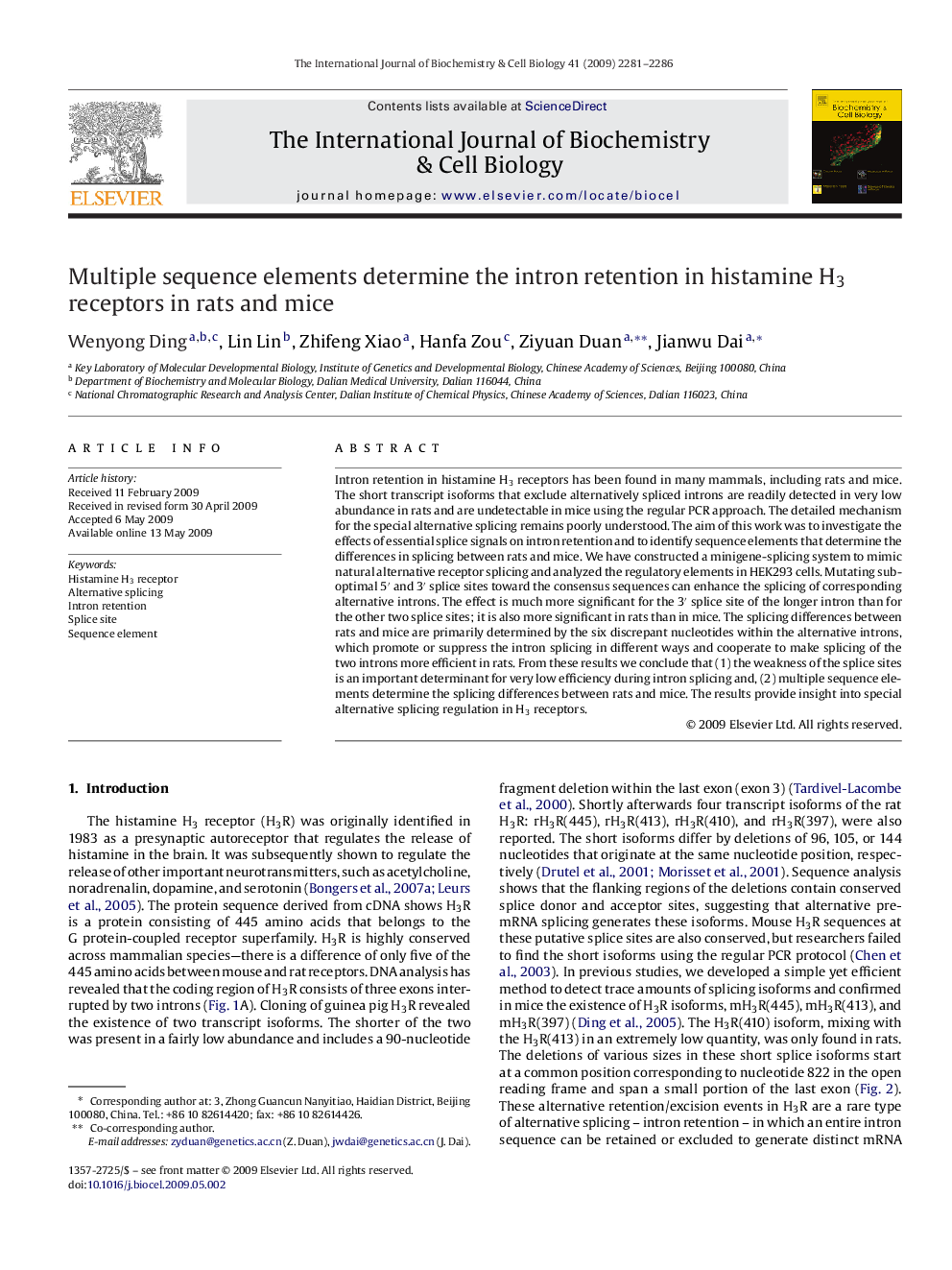| Article ID | Journal | Published Year | Pages | File Type |
|---|---|---|---|---|
| 8325716 | The International Journal of Biochemistry & Cell Biology | 2009 | 6 Pages |
Abstract
Intron retention in histamine H3 receptors has been found in many mammals, including rats and mice. The short transcript isoforms that exclude alternatively spliced introns are readily detected in very low abundance in rats and are undetectable in mice using the regular PCR approach. The detailed mechanism for the special alternative splicing remains poorly understood. The aim of this work was to investigate the effects of essential splice signals on intron retention and to identify sequence elements that determine the differences in splicing between rats and mice. We have constructed a minigene-splicing system to mimic natural alternative receptor splicing and analyzed the regulatory elements in HEK293 cells. Mutating suboptimal 5â² and 3â² splice sites toward the consensus sequences can enhance the splicing of corresponding alternative introns. The effect is much more significant for the 3â² splice site of the longer intron than for the other two splice sites; it is also more significant in rats than in mice. The splicing differences between rats and mice are primarily determined by the six discrepant nucleotides within the alternative introns, which promote or suppress the intron splicing in different ways and cooperate to make splicing of the two introns more efficient in rats. From these results we conclude that (1) the weakness of the splice sites is an important determinant for very low efficiency during intron splicing and, (2) multiple sequence elements determine the splicing differences between rats and mice. The results provide insight into special alternative splicing regulation in H3 receptors.
Related Topics
Life Sciences
Biochemistry, Genetics and Molecular Biology
Biochemistry
Authors
Wenyong Ding, Lin Lin, Zhifeng Xiao, Hanfa Zou, Ziyuan Duan, Jianwu Dai,
